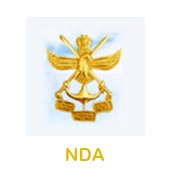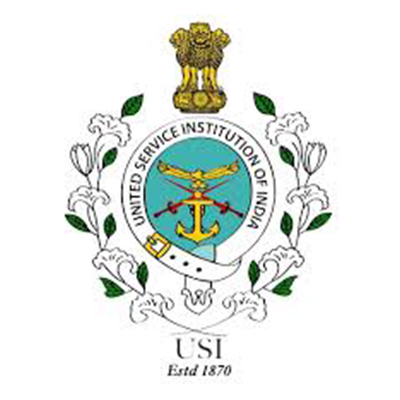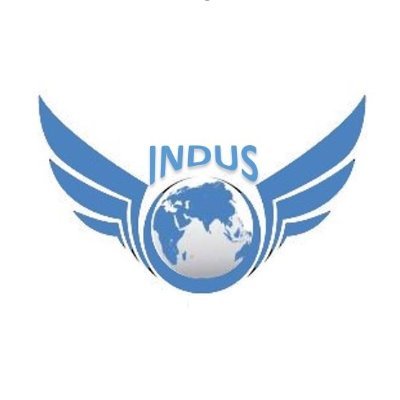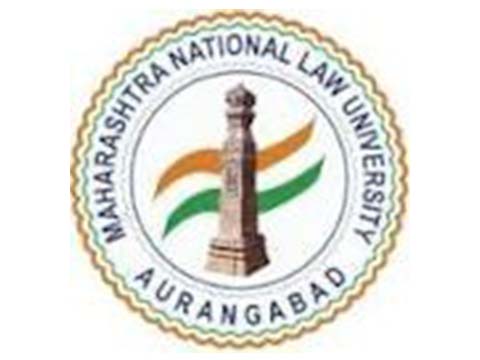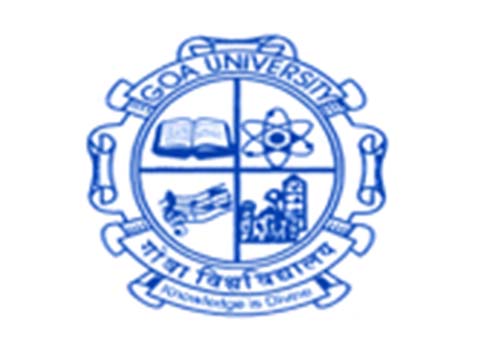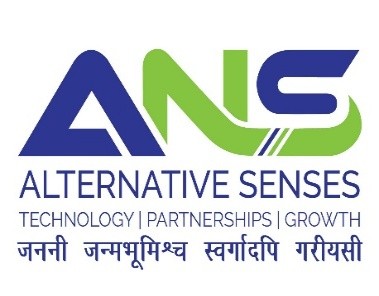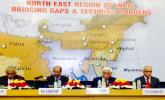
Seminar | 20-Mar-2018
Seminar | 21-feb-2018
Seminar | 21-Feb-2018
PROCEEDINGS OF SEMINAR ON NORTH EAST REGION OF INDIA BRIDGING GAPS AND SECURING BORDERS 21 FEB 2018
BY| BRIG HS CHEEMA, SENIOR FELLOW, CENJOWS
INAUGURAL SESSION
1. A seminar on North East Region of India Bridging Gaps and Securing Borders was conducted on 21st February 2018 at DRDO Bhawan jointly by CENJOWS and Net Assessment of HQ IDS. The seminar had two sessions to solicit views from the eminent speakers. While the first session was dedicated to Border Management: Bangladesh and Myanmar that was chaired by eminent journalist Shri Nitin Gokhale, the second session was dedicated to solicit views on security of Siliguri corridor chaired by Lt Gen Vinod Bhatia, PVSM, AVSM, SM (Retd), Director CENJOWS. The inaugural address was given by Adm Sunil Lanba, PVSM, AVSM, ADC, Chairman COSC and CNS. The keynote address was delivered by Lt Gen P J S Pannu, PVSM, AVSM, VSM, DCIDS (DOT), HQ IDS. The special address was delivered by Shri Shiv Shankar Menon, Former NSA and Foreign Secretary. Other eminent personalities who participated in day long two sessions are Shri Nitin Gokhale, Executive Director- Bharat Shakti, Shri Rajat Sethi, Advisor to CM Manipur, Amb Veena Sikri, Former High Commissioner to Bangladesh, Lt Gen SL Narasimhan (Retd), DG Centre for Contemporary China Studies and member NSAB, Shri Samudra Gupta Kashyap, Senior Assistant Editor, Indian Express, Guwahati and Lt Gen VG Khandare, PVSM, AVSM, VSM (Retd), Former DG DIA. The concluding remarks were delivered by Gen Bipin Rawat, UYSM, AVSM, YSM, SM, VSM, ADC, COAS.
2. Inaugural Address by Adm Sunil Lanba, PVSM, AVSM, ADC, Chairman COSC and CNS. Chairman COSC while delivering the inaugural address stated the Prime Minister Modi’s vision and creation of Act East policy where North East region is the heart of it. He very clearly enunciated the importance of Northeast region which has an extra ordinary important geo-strategic dimension and is the land bridge to South East Asian countries. He congratulated the organizers to choose such subject for deliberation. Full potential of Northeast region which shares boundaries with five nations could not be leveraged due to various reasons like boundary, geopolitics and demography. During partition the natural boundaries for transportation routes got disrupted and had impacted its growth. The only connect to the mainland is through Siliguri corridor having major security concerns. The region is embroiled with ethnic unrest, insurgency, illegal migration resulted into impeding its growth. This region has huge untapped resources and potential to develop as a bridge the same need to be harnessed for which there is a need of pragmatic and holistic approach to mitigate problems by various stakeholders to achieve desired aims for the region.
3. Keynote Address by Lt Gen PJS Pannu, PVSM, AVSM, VSM, DCIDS (DOT), HQ IDS. In keynote address Lt Gen Pannu welcomed all eminent speakers and distinguished guests present to attend the seminar. As an organizer, he briefly dwell upon some of the issues on this contemporary topic and opened the proceedings to be further elaborated by different speakers during the panel discussions. Certain issues he highlighted are as follows: –
(a) With improve in security situation in trouble North East region states phase of conflict resolution has begun and this phase should be gainfully used for development, which in turn will make this region move out of isolation and also will work as bridge to the East. Over all entire situations still remain fragile and has got considerable hurdles and limitations. There are problems caused by topography viz. nature of physical terrain, the history of violent conflicts in the region and the poor state of local industries and transport infrastructure. The conflict ridden and poorly developed areas in the immediate neighborhood add to the difficulty. The surface transport infrastructure is poor and the roads are susceptible not only to blockades that disrupt trade but also to extortion which raises the cost of trade substantially.
(b) India needs to pursue its look Act East policy through Northeast to boost the region’s economy by allowing it to leverage the neighborhood markets. India needs to attract domestic and foreign capital for investment in North East to take locational advantage of substantial neighbourhood markets and developing the Northeast as a manufacturing hub.
(c) Each eight states of north east have its own complexities spanning ethnic unrest, insurgency and illegal migration and needs different strategy for each state to address the same. There is also the requirement of having a pragmatic approach to border management with neighbouring countries. There is a need to enhance security forces and use technology to check cross border movement.
(d) India’s look East policy through Northeast would be dependent to a certain degree on India’s relations with Myanmar and the domestic situation in both Northeast India and the Myanmar. Security concerns along Indo Myanmar border need to be viewed holistically due to identical tribes living on both sides of the boundary which cause difficulty in restricting the movement of the people hence require different approach.
(e) Northeast region can be best assessed from mainland India if Bangladesh agrees to facilitate the process by enabling transit and connectivity. Will Dhaka consent to land-sea corridor for accessing the region through Bangladesh provided Delhi makes major concessions in sharing water of common rivers, trade, investments and boundary disputes. The operationalisation of land border agreement with Bangladesh and having more Road and Railways services mark the historic moment in the bilateral relations between the countries.
(f) The Siliguri corridor is narrow, vulnerable to turbulent insurgent and simmering sub national movement making the region a potential target for hybrid warfare. How this important link can be strengthened needs to be addressed.
4. Special Address by Shri Shiv Shankar Menon, Former NSA and Foreign Secretary. Shri Shiv Shankar Menon laid out a comprehensive pragmatic look of India’s security concern on its borders and its management with major focus on broader political considerations while dealing with border issues. No borders are same as they were 200 years ago, nations draw boundaries and these are manmade which are bound to change. One needs to understand this balance clearly. China has understood this issue very well and during recent Doklam crisis was keeping the political goal in mind for Bhutan. China wanted to convey to Bhutan that India cannot defend their interests and security and also arouse their opinion on these issues:-
(a) India needs to have integrated approach for better border management. Borders are zone lines on map created by nations. One need to understand that there are people living on both sides of it having similar ethnicity, customs, traditions and linkages and the same needs to be respected. Infact, the border lines tend to inhibit our security and put the stakeholders into defensive mind set. India’s borders are largely the product of colonial action. The common linkages and roots of people which cut across these man-made lines, there perspective needs to be considered while dealing with border management. There is also a requirement of jointness among political, diplomatic and military. Integrated approach can give better dividends.
(b) India has gone in for cross border operations many a times and most of these operations were covert and never publicized. Once they came in public domain or publicized it put the adversary in only position to react or lose credibility hence this issue needs to be dealt accordingly.
(c) Essentially one need to carry people along if one has to ensure better and proper border management. India has a mix record in this regard on this account. For example, Arunachal Pradesh has been integrated very well there are more Hindi speaking people there than in any other parts of the country. However, look at Himachal Pradesh and Uttarakhand most of the young people have moved out to the plains for job hence defence of these areas becomes much harder and complicated.
(d) In 1962 war, China annexed large territory and stayed in some of those areas for more than four months before unilaterally retreating. PLA respected the people and tried its best to garner public support but failed to do so. Local inhabitants welcomed India with open heart. Why this happened? The primary reason was that people cannot be fooled they could see what was happening in Tibet, the destruction of monasteries, settlement of nomads and the attitude of Chinese. This clearly shows that population support is a must to achieve a credible Border Management.
SESSION 1
BORDER MANAGEMENT BANGLADESH AND MYANMAR
5. Opening remarks by Shri Nitin Gokhale, Chairperson. Shri Nitin Gokhale deliberated upon the unique multiple challenges of Border Management in North East. 98% of the borders of north eastern states are with other countries and only 2% is with mainland India hence, the influence of each country on the populace on the borders cannot be done away with as also each state has different set of challenges as they share borders with different countries. These challenges further multiply due to terrain configuration, ethnicity, people connect across, level of insurgency and multiple types of security forces managing the borders.
6. Border Management India-Bangladesh. Border is managed by BSF. Due to riverine terrain the border guarding has different set of challenges especially during monsoon season. There has been an attempt to fence the border for past 33 years, the task is yet to be completed. The economic pull towards India for better livelihood and jobs compel Bangladesh citizens to move to India which creates a unique challenge for Border Management other than that is the smuggling activities of different kind over here. Also, there is a need to reconnect with old routes of connectivity which has been lost due to the partition hence the Northeast region became isolated the same needs to be addressed to bring prosperity to the region.
7. Border Management India- Myanmar. Border is managed by Assam Rifles. Due to deep linkages across borders, it is a free moment regime on the borders which is itself a challenge. The situation gets further complicated due to the multiplicity of forces responsible to man the borders. The border is not fenced and due to rugged terrain configuration policing the border is a challenge.
8. North East the Bridge to our Act East Policy by Shri Rajat Sethi. Shri Rajat Sethi states that economics lies at the heart of Act East Policy of the present government. Since, the BJP government formation in Manipur major efforts made to improve security situation so as to gain confidence of investors and create more job opportunities in the state. With this as aim investor meet was conducted at Imphal to give confidence to investors within India and abroad. Textiles and sports equipment manufacturing are viable industries which can come up in the state and the plans have been put into action in this regard. In fact, Israel has committed for agri -based investment. As far as trade with Myanmar is concerned, one of the main trade route is through Morriah check post. Due to security and other connected issues the trade has come to stand still efforts are on to resolve the same at the same time efforts have been made to open an alternative route to Myanmar through Behiang by connecting National Highway- 37 to Behiang and then taking it across. One of the other issues of concern is attitude of security forces; it has to change with the change of time. Manipur is heading for development and will be a major contributor to India’s act East policy.
9. Future Challenges – Strengthening Ties with Bangladesh : Amb Veena Sikri, Former High Commissioner to Bangladesh. Accept that past, present & future are all merged into one & unless India look at it from that context, India will never know how to tackle this problem with Bangladesh. Amb revisited the history and stated that it was only after 1965 war that connectivity between India & East Pak was cut off by the West Pak govt, before; it was seamless from Ganga to NE to Irrawaddy, one seamless whole. But 1965, was also a time that made 1971 war and independence of Bangladesh possible. Bangladesh people realized that in 1965 they were completely abandoned by West Pak. India was on the other hand kind, did not interfere and respected the borders. Still, only 50 years later, India has not been able to undo because of the mindset in Bangladesh and military rule and despite Sheikh Hasine being back to power for ten years she is still battling the mindset. Bangladesh had this feeling of being surrounded on three sides by India with whom it shares 4000 km of borders. To counter that, Bangladesh wants to be ultimate arbiter of what is going to happen in NE India by checking connectivity. Therefore, to unlock the potential of NE India have to take Bangladesh on board. To do it three aspects needs to be addressed i.e. Connectivity, (includes infra development), Economic Integration and Security Issues. Security issues are Border Management aspects, Indian Insurgent Groups (IIG) and Problem of illegal immigrants from Bangladesh, who are present all over India, but more in NE Region.
10. Connectivity. India need to look within and find problems instead of blaming Bangladesh, Myanmar or insurgent groups. India has been slow in implementing planned projects. Kaladan multi modal projects, even after 15 to 20 years is still pending. Akhaura-Agartala Rail Link is an excellent rail link that can solve the problems of the North East to a great extent as rail road connectivity is available right upto Agartala. But just 15 km stretch and has not been built. Chittagong-Mongla Port is equally important. Develop Paradip deep-sea port and bring containers up to Chittagong. From Chittagong to Southernmost tip of Tripura is just 72 kms. But one heavy duty bridge needs to be built across River Feni. This will enable movement of heavy-duty equipment. Though committed nothing has happened so far. Delay in offshore gas field’s project in Myanmar, India lost it to China. By being slow in implementing infra projects India has given to other countries the clear impression that either India is not interested or too inefficient, because China comes and builds things within months.
11. Economic Integration. India cannot develop its North East region without economically integrating with Bangladesh. Indian entrepreneurs will not be willing to invest in North East until the problem of Siliguri Corridor is resolved. Other alternative is that India invests in Bangladesh and economically integrates it so as to create opportunities for prosperity of North east.
12. Security Issues. Border Management means a friendly method, which takes into concern the security concerns of Bangladesh otherwise; negative propaganda derails the India’s interest. At the same time a mechanism needs to be set to reduce the illegal activities viz. cattle smuggling, drugs and now gold. There is a problem of Indian Insurgent Groups taking shelter in Bangladesh, however, under the present PM of Bangladesh there has been a very positive approach and at the moment problem of Indian Insurgent Groups is almost finished. But these security issues are reversible with another govt coming to power in Bangladesh. Newspapers in Guwahati are reporting that BNP leaders meeting IIG leaders regularly. ULFA (I) has strong economic interests in Bangladesh. Also, for sure China is behind all these IIGs, encouraging neighbouring Govts not to act against IIGs.
13. Illegal Migration. In West Bengal today, illegal migrants are being invited to participate in elections. PM Sheikh Hasina is doing her best to get rid of the Jamaati problem and radical fundamentalists but these anti Bangladesh groups are given shelter in West Bengal. In Assam, NRC has created huge furors there the biggest problem of is to identify illegal migrant.
14. Integrate BIMSTEC and BBIN. Overall just as within SAARC India has created BBIN region with some success, despite problems of motor vehicle agreement, environment issues etc, it is still moving ahead and are a viable entity. Similarly, India need to use BIMSTEC, widen the region and include region West of Irrawaddy in this region. The region West of Irrawaddy needs to be developed, as this region is even neglected by the Myanmar Government. India should be focusing on economic issues with Myanmar, development West of Irrawaddy will integrate BIMSTEC and BBIN and make it one integrated whole.
15. Policy Options for Border Management with Myanmar and Connect with CI/ CT Operations: Lt Gen Vinod Bhatia, PVSM, AVSM, SM (Retd). North East is a peculiar set of contradictions little understood by most. It is complex and complicated with few common threads, few convergences and many conflicts. People of North East are relatively happy though deprived of development; they are rich in culture, with values and belief. However, they know no boundaries either interstate or intrastate. These tribal people are in constant battle for identity and survival some of them cannot live with the idea of India nor without India and hence have taken to the gun with misconceived notions of sovereignty and autonomy. This is the reason for having oldest insurgency still continued in the region. The attitude of mainland Indians towards people of north east Indians is too adding to the problem of alienation.
16. Four out of eight North Eastern states shares border with Myanmar. With border agreements of 10 Mar 1967, most of the issues with Myanmar are settled expect for boundary dispute between boundary pillar 76 to 79 and 145 to 149 and the Moreh. However, border has divided the people superimposing an artificial boundary line on a strong society and culturally connected people. Three lac people live on either side of border in approx 252 villages. This kind of connects resulted into a free regime movement in place through 150 crossing points where everybody can move across freely. The tribal affinity and linkages of the local people is very strong and is above everything, they cannot comprehend how nations can divide them this aspect needs to be understood very clearly dealing with the issue. As of today, CI situation is under control in the region and violence level is at suboptimal level. In 2017, Manipur the most volatile state had seen only 55 causalities out of which 38% were in 38 sq km of Imphal, where AFSPA is not enacted. Nagaland has ceasefire in place with NSCN (IM) and had only eight causalities whereas Arunachal Pradesh had only six causalities that too of terrorists. Military has provided conclusive platform from where the politics has to take it further. Economic development is the only answer and it has to be people driven. Under such situation for border management fencing the borders is not the workable and recommended solution.
17. Border Management. Border fencing of Bangladesh has not achieved its aim due to various reasons. Similarly, now there is a proposal to fence the Indo – Myanmar border for better border management. In view of the earlier stated facts as also due to the terrain configuration this will not work. There are a number of insurgent groups having camps across and also there is an issue of smuggling, drug trafficking, law and order and illegal migration problems. To deal with all these issues needs an integrated and different approach. India needs to engage with Myanmar more. India has not been able to manage its borders the way it should be for example the sensitive border of China is managed by Army and ITBP two different forces under different Ministries having different chain of command. How can they integrate and work? On the Myanmar border Assam Rifles is responsible for Border Management and CI operations in hinterland, the system is working very well as one organisation is responsible for the complete gamut of security operations. There is a need to understand the subtle difference between border management, border guarding and border defence. The Assam Rifle is doing a better job, however, the policy makers at the moment are planning to hand over border management with BSF or now ITBP and carry out fencing of borders. As brought out earlier fencing border is not a right option and the present system if reinforced further can deliver better dividends hence it is recommended to have statusquo.
SESSION 2
SECURITY OF THE SILIGURI CORRIDOR
18. Opening Remarks of Chairperson : Lt Gen Vinod Bhatia, PVSM, AVSM, SM (Retd). Siliguri Corridor is the precious real estate in the country. 22 kms of Siliguri Corridor connects eight and a half States and five crore people. Siliguri Corridor borders Bangladesh, Nepal, Bhutan and in an indirect way China which is not very far away. What is the Siliguri Corridor actually? While granting independence, British were not very kind, they divided country into many parts during independence thinking India would disintegrate in time, which did not happen. However, India have certain vulnerabilities and Siliguri Corridor is one of it. While analyzing its importance one should per say not only look at the corridor but beyond it. Two bridges on Mahananda, a river whose potential have not been exploited, 37% of the country’s population, 7.97% of land mass of the country.
19. What does Siliguri Corridor mean to India? It is an unstable region. The corridor especially in the Kishanganj region has witnessed a demographic shift, which has been deliberately done to create problems. The internal security problems can be exploited by enemies viz. Darjeeling Gorkha Land problem, KLO ULFA in Assam. Off late, there has been intrusion in Doklam. Is this action of China a strategic vulnerability? Yes, off course as it is close to the Siliguri Corridor. If Siliguri Corridor gets disrupted how does India sustain its population? The psychology impact of such action on the country will be devastating, especially when media today can blow it out of proportion. Rightly, so when India look at two and half front the half front is not J&K but the Siliguri Corridor.
20. Geo Strategic Importance & Impact on North East: Lt Gen S L Narasimhan (Retd), DG Centre for Contemporary China Studies & Member NASAB. Geo Strategic importance of North East. North East is the only part of India that shares boundary with five countries. The location of North East creates unique problem for this region. Northeast is connected by Siliguri Corridor which is a small 22 Kms strip through which most of the essential infrastructure flows from mainland India to North East. It further provides connectivity from India to further east. North East is very rich for resources like oil, tea, coal, uranium, forest, hydropower. The richness of this region induces moment of population from other countries specially Bangladesh into North Eastern states.
21. Impact of Geo- strategic importance on North East.
(a) It Lends Itself to Insurgency. One of the prerequisite of any insurgency in world is that it needs a boundary with the neighbouring country and that is met in this region.
(b) Brings External Players. The five countries with which North East shares its boundaries have influence on the region and it lends to external players to influence local issues.
(c) Doklam Issue – China Factor. Out of the five bordering countries, three of them have a border with China and so China has its own influences, which are acting in this region.
(d) Vulnerability of Siliguri Corridor.
(e) Lack of Understanding the Problems of North East. Understanding the problems of North East among polity, service and uniform community who have not served in these areas is an issue. The perception of Northeast varies, India will make a mistake, if the entire region is placed as one North East region. Each state has different dynamics and within each state the dynamics are also different, one needs to understand these dynamics which work in each state and interact accordingly.
(f) Alternate Connectivity. The alternate route to North East is imperative due to vulnerability of Silliguri corridor and distances, hence, Kaladan like projects needs to be planned and come in the mind of strategist and planners.
(g) Illegal Activities. Illegal activities to include fake Indian currency, weapon smuggling, narcotic smuggling is underway and the people of the region are easy conduit, who moves in this region.
(h) Impact of Neighbouring Countries. Immigration takes place to India from neighboring countries because of the population, which is looking at India as the prosperous country and wants India to share that prosperity with others in the neighborhood. It also creates an opportunities and environment for anti-national elements, LWE and ISI etc to come into this region and create a mischief. Other countries do give these groups operating in the region some kind of sanctuary in form of camps or otherwise eg people getting arrested from Nepal, Myanmar & Bangladesh, conduct of OP CLEAR in Bhutan (2004).
22. How to Deal with Various Strategic Issues of North Eastern States.
(a) Devise a State Centric Long-Term Plan. Need to devise a State centric long-term plan for each of these States. This is in the Centre Govt domain. While devising these plans Centre Govt should also take the state govts on board on these issues because there is a number of issues between State – Centre that need to be synchronized.
(b) Need to strengthen law & order machinery which is easier said than done.
(c) Stop Splitting of Insurgent Groups. More the number of insurgent groups in North East, more it is difficult to handle each one of them. Manipur is a typical case where groups operating are too many.
(d) Development of Infrastructure. Railway line from Silchar to Tripura and beyond is long overdue. The highways need to come up and for that security situation needs to improve. It is common knowledge that insurgent groups operating along the railway lines under construction are getting into deals with construction companies.
(e) Need to resolve disputes with the neighbours.
(f) Tendency to believe that India being so big and prosperous economically will mean to harm neighbours – this needs to be reassured by conveying and make them believe that India has no hegemonic tendencies.
(g) Take Ceasefire & SOO to a Logical Conclusion. Some insurgent groups have been in ceasefire since 2008, but for 10 years the end result is nowhere to be seen. If these people are to remain in camps and sustain themselves, it is going to become an issue in itself.
(h) Need to strengthen the ISR capability.
(j) Need to deliver on any promises made with Neighbours. None of the promises that India made to its neighbouring countries are fulfilled in time.
(k) Siliguri Corridor. On the Siliguri Corridor operational plans to counter any threat exists. India will be able to protect and defend as and when required. But two more things need attention for security of the Siliguri Corridor (monitoring & looking at in great amount of detail): –
(i) Land Along Siliguri Corridor. Who holds it needs to be taken note off. Preferably should be held with the government.
(ii) Monasteries. In this region what is the influence of funding of the monasteries.
(l) Industrial Development of North East. While countries are coming forward to invest into Manipur, there is a need to look at two more things:-
(i) Can Indian industry be moved to do something in the region?
(ii) How can the potential of North East be increased? For e.g. the Canning factories which had opened recently are closed. Can it be reactivated? Need to harness the potential of the people of North East, otherwise North East will become a conduit for goods to go across to other countries and people will be left out other than doing normal work. So potential of North East needs to be developed.
(m) Multiplicity of Agencies. Like different forces looking at different borders. Need to bring some kind of synchronous effort in that.
23. Demographic Changes and Migration in the Siliguri Corridor: Samudra Gupta Kashyap.
Historical Background.
(a) 1845. The first migration in North East region commenced, when the British opened tea gardens. Today these migrants are all part of the larger Assamese identity. They have two MPs and seven MLAs in Assam,
(b) 1905. Reorganization of Bengal under Lord Curzon where Assam was annexed to Bengal and for about seven years remained so. This was the time of policy of sponsored migration of peasants from East Bengal to the Brahmaputra Valley as Lord Curzon and his officials felt that they could grow more food there and this transferred people from heavily populated East Bengal. This is how the problem began in Assam. It is not that they were the first thrust of Muslims in Brahmaputra Valley. Arrival of Muslims in Assam had begun in 1215
(c) Post-independence era migration took place due to the partition from East Pakistan, they occupied legally and illegally tribal belts meant exclusively for tribal under the 6th Schedule of Constitution. Two categories of reserved areas in Assam viz. Public Grazing Reserves (PGR) and Valley Grazing Reserves (VGR) most of that have been wiped out due to encroachment.
(d) In 1951, preparation of a National Register of Citizen for Assam carried out to identify illegal migration and it was Govt found that around 1.5 to 2 lac people had illegally come to Assam from East Bengal, after the date that had been fixed for people to move from one side to the other. But the census of 1961 said 2 lac migrants were present in Assam.
(e) From 1961 to 1966, Govt of Assam, managed to remove 1.8 lac illegal immigrants in Assam of East Bengal origin and pushed them out from Karimganj – Dhubri border to East Pakistan. It was around that time that PM Nehru summoned CM of Assam asking him to stop it or there would be no further allocation of funds to the State. Around 40,000 of those people had not left.
(f) In 1969, Govt of Assam came out with a scheme to further identify the illegal migrants and move them out. However, there was re-infiltration of 1.8 lac people during the liberation of Bangladesh in the form of refugees most of them have not returned. The govt at that time failed to ensure that these refugees returned to their country.
(g) In 1978, one of the Lok Sabha seat felt vacant and during a revision of electoral roll, it was found that 40,000 new names were included. This triggered a movement by All Assam Students Union in 1979, which culminated in 1985 in the form of an Assam Accord. Assam Accord fixed 1971 as the cutoff date which is a replication of the Indira – Mujihib Pact of 1971. This was reflected subsequently in 1982 by then government to enact the Illegal Migration Determinant by Tribunals Act 1983 which put the onus of the proof on the complainant and not the accused. In 2005, in the famous case of Sarvanand Sonwal Vs UOI, the Supreme Court of India Struck this act down. SC described influx from Bangladesh as external invasion of India leading to internal disturbances.
24. How many illegal migrants in Assam? In July 2001, then Minister of State for Home Affairs stated 1.2 crore illegal immigrants from Bangladesh were in India. 57 lacs in West Bengal, 50 lacs in Assam, 4.79 lacs in Bihar, 3.75 lacs in Delhi, 3.25 lacs in Tripura, and 59,000 in Nagaland. There are other figures of illegal migrants. IMDT Tribunals between 1985 and 2005 declared 12,846 persons as foreigners and out of them only 1500 were pushed back. There are no mechanisms to actually deport as Bangladesh does not accept them back. So, if the illegal migrants are pushed back they come from another side as border remains porous. The Foreigner’s Tribunal on the other hand declared 42,000 persons as illegal migrants but pushed back only 895.
25. Looking at electoral rolls of Assam there are about 1.35 lac names with Prefix of “D” which marks them doubtful and debarred from casting votes. However, when the question comes about deportation the answer is that they have disappeared or mingled with local population and they cannot be tracked down. Only in recent time about three years ago, Govt of Assam set up some detention camps in three to four districts and central jails to accommodate illegal migrants. As on today 300 people have been confirmed as Bangladesh nationals and their address have been found. They are in the process of being sent back.
26. North East – Design for Larger Islamic State. There is a very specific design to make the North East as part of the larger Islamic State. Going back to 1947, during partition three groups were created i.e. Group A – India, Group B – West Pakistan and Group C – East Pakistan and Assam. Quoting from a book by ZA Bhutto “Myths of Independence”. “It will be wrong that Kashmir is the only dispute that divides India & Pak. One nearly as important as the Kashmir dispute is Assam & some districts of NE India adjacent to East Pak & that includes Siliguri, Dinhata, Falakata, entire region of Cooch Behar and parts of West Bengal including Madnipore and 24 South Parganas.” To these Pakistan has very good claims and has been quoted by Gen SK Sinha in his report of 1998 to Hon’ble President of India on ‘Illegal Migrants & Problems in Assam’. Mujibur Rahman, supposed to be friend of India, says in his book “Eastern Pakistan” that because Eastern Pakistan has insufficient land for its expansion and because Assam has abundance forests and mineral resources, Eastern Pakistan must include Assam to be economically and financially strong. Gen Sinha mentions in his famous report that there is a tendency to view illegal migration into Assam as a regional matter only affecting Assamese people. Its more dangerous dimensions of undermining our national security is ignored as also the long-cherished design of Greater East Pakistan. Bangladesh is making inroads to this strategic land link of Assam viz. Siliguri with the rest of the country and can lead to severance of the entire land mass of the North East.There is also a design to destabilize the region by the insurgent groupsduly supported by our neighbours particularly in the North.
27. Mitigating Threats to the Siliguri Corridor: Lt Gen VG Khandare, PVSM, AVSM, VSM (Retd). Whatever are the issues of the North East these are directly related to Siliguri Corridor and vice-versa. The vulnerability of Siliguri Corridor was always understood by the military fraternity for so many years. It is only when the Dokalam issue started that it got the media glare. The urgency of mitigating the threats to Siliguri Corridor have got further highlighted.
28. There is a lack of synergy to address the problem as everyone involved is working in silos/ verticals and who exactly is supposed to take the ownership of these projects is an issue in itself. Siliguri Corridor and North East region needs to be looked like a composite problem need to be handled by all ministries of the Govt. For external factors, the MEA must take the lead and ownership. MoD is very much involved in the preparedness of the defences including the military forces. One of the issue which is left out is the defence diplomacy. That is something the military would have to be enabled and empowered. In this region, with the neighbouring countries Indian military has a high degree of acceptability. To that extent the footprints of our defence wings has to improve.
29. Why would the countries around North East India depend on it? Why would they put at stake their survival or their interests at the cost of knowing that China is a mightier power? It is only when India grow the interdependence – both economic and military. While diplomacy tries to play its part by dissuading – for e.g. one of the country mentioned was dissuaded not to purchase JF-17s, and that country turns around and says give alternative for their need. So here is the issue of what are your strategic assets. The OFs, PSUs/ DPSUs have to perform as strategic assets and not mere job providers. This is one of the issue MoD has to look at. The services also play a major part in defence diplomacy. As during disaster management, the kind of solace Indian Armed forces provide by reaching out in time to these three to four countries which always face disasters merit attention.
30. Siliguri Corridor is vulnerable does not mean that tomorrow China is going to start an attack there. As professionals have to work out what is the threat in terms of time and space. Whether that intention of going in for a full-fledged war is going to yield out of proportion results for China and if not going to yield when it will yield? So, this is one more issue one need to look at when celebrating vulnerability to Siliguri Corridor.
31. The issues of alternates’ connectivity through Bangladesh and Myanmar are important to overcome the vulnerabilities of Siliguri Corridor. If India is in a position to have alternate and assured means of communication especially during criticality then the vulnerability of Chumbi Valley can be addressed when required. The intention of China towards Tibet and the adjacent region has always been clear so is the India’s resolve to defend its borders be it 1967,Sumdrong Chu, Demchok, Depsang and lately Dokhlam. Today to have parity with adversary India needs to work on projects on to a certain time line based and on quality, get strategic assets in place and most important is to keep the internal cohesion. If there is a Gorkha Land problem going on, insurgency and terrorism going on and also similar problems coming up through Bangladesh then there are major problems at hand. India have the capabilities to solve these by tackling these issues one at a time.
32. Concluding Remarks by Gen Bipin Rawat UYSM, AVSM, YSM, SM, VSM, ADC, COAS. COAS complimented the organisers for selecting a very interesting and contemporary topic. COAS started with identifying the problem of North East region he stated that one need to understand is the problem on the North East an identity problem, is it a problem of development, is it a problem of security or is it a problem with the demography that is happening there. COAS is of the view that it is all encompassing and need to be looked at holistically. Why the North East region has not seen development? Is it because there is insurgency or it has been allowed to happen. Every time one goes to Mizoram, people ask why they haven’t developed when there is no insurgency. It is because people have not taken a lead there. With Act East Policy, the Centre Govt is seriously contemplating at addressing issues in the North East. Kuki students from Mizoram, who look like Myanmar citizen, while moving in places in Delhi were mistaken as foreigners. So, there is a problem of identity. They are a part of India, they need to be integrated. However, until development does not happen holistically, this problem will continue to persist.
33. It was brought out that Bangladesh has a better HDI than India today. Therefore, will the migration from Bangladesh continue? Migration from Bangladesh is happening for two reasons. Firstly, Bangladesh is running short of space. Large part of their areas gets flooded during monsoon, so they have very constricted areas to live. Therefore, people will continue to keep coming in to India. The second reason is planned immigration. This is taking place because of India’s Western neighbour. They will always try and ensure that this area is taken over through the proxy dimension of warfare, wherein they don’t have to confront a stronger nation through conventional operation. India’s Western neighbour as also northern neighbour to that extent, attempt to keep this area disturbed resulting into some kind of migration happening. The solution lies in at least identifying this problem and holistically looking at it in perspective. But development is the main issue and identifying the population of this area with the population of mainland becomes important.
34. On vulnerability of the Siliguri Corridor COAS stated that it can be well taken care of. Firstly, identify the problem and adopt a step by step approach. All the panelists during deliberations have thrown up lot of good ideas those need to be look at holistically. The govt is now looking at the North East region with the correct perspective and time will not be far when India will be able to amalgamate this region, ensure development and with development will come the control of the people who are residing in this area. It may not now be possible to change the population dynamics of this area; population inversion has taken place. One has to understand and got to appreciate to live with all the people together peacefully in the region irrespective of their caste, creed and religion. Amalgamate the people who are living there, then try to identify who are creating trouble for the country and take appropriate action. Muslim population started coming into Assam from 1280 to 1326 so they are not late arrivals but early arrivals, came concurrently with Ahoms. Both people have claimed to be state of Assam and therefore the North East region need to be understood in correct perspective. One good example quoted by COAS on integration was of Arunachal Pradesh where Hindi language is better spoken than main land India so amalgamation has happened there. It didn’t happen elsewhere why need to look into.




